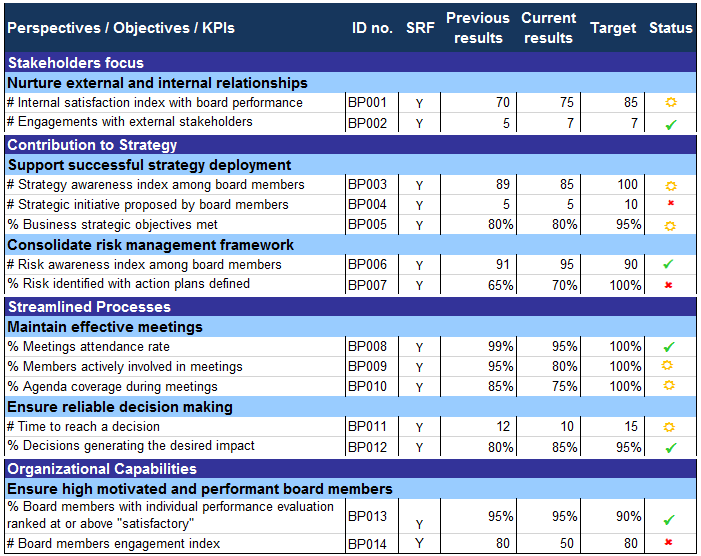Measuring non-executive board performance. Part II – best practice: KPIs or surveys?

Non-executive boards seem to have been left behind in terms of performance measurement, as there are few insights into how this process can be optimized, in order to increase boards’ effectiveness and to make sure they lead organizations towards success.
In a previous article, I presented some of the approaches that I find ineffective in terms of measuring the performance of non-executive boards, such as assuming that boards’ results are a reflection of individual performance, that company’s performance is directly linked to the board’s effectiveness or the common trap of monitoring only what comes in hand to measure.
When it comes to measuring the performance of teams we have, in simple terms, two options: we can either use metrics to provide an objective quantification of performance or we can deploy other assessment instruments, such as surveys and peer feedback. The drawback of using metrics or Key Performance Indicators is that some results may not be easy to quantify in numbers, the effect of some decisions may take too much time to be observed and the data can be provided too late. On the other hand, surveys are more effective at providing data, although lead time is not exactly short. Surveys and peer feedback get to capture much more information and insights than a sole KPI could, but they are inherently affected by human subjectivity. So, to what extent can such an evaluation method provide fair, equitable, relevant and comparable performance evaluations?
To balance the pros and cons of these 2 different instruments, an organization can use both of them and integrate results in a non-executive board scorecard, as shown in the example below:
Tips to consider when developing a non-executive board scorecard:
- Clarify the responsibilities of the board, as they will provide the fundamental role of this governing body. This is the starting point for identifying value drivers, which will help you identify what is important for this role, such as: advice on strategic planning, presence at meetings, monitoring the executive board, risk management, reputation etc.
- Establish objectives for the board, instead of providing an endless list of KPIs. Objectives articulate the strategy, they provide a context for the KPIs and they explain, in simple terms, what is expected to be achieved. You can also include strategic themes, as in the example above (highlighted in dark blue) in order to cluster more objectives.
- Select relevant KPIs for the scorecard, by ensuring they reflect the objectives established. The KPIs selected should be measurable, clearly expressed and balanced. Relevancy comes from identifying what numbers illustrate the objective’s achievement and inform the decision making process, so you should not focus only on what is easy to measure, but on the KPIs that provide value. Balancing KPIs refers to choosing at least 2 KPIs for the same objective, to ensure the board will not develop tunnel behavior in its strive to meet targets. For example, it is not enough for board members to be present at meeting (% Meetings attendance rate), as they should also be engaged and actively participating (% Members actively involved in meetings).
- Establish realistic targets, by analyzing historic data and current system infrastructure. Targets should be ambitious enough as to trigger motivation, but also attainable, otherwise people can get frustrated.
Achieving the most effective selection of KPIs will inquire more than just a simple research for common examples. An internal contribution is needed to define these KPIs or even to create them. Each organization can decide what “actively involved in meetings” actually means for them, or how # Risk awareness index among board members will be measured. Furthermore, all indexes that reflect qualitative aspects rely on specific surveys which can be customized to any organizational context.
This type of scorecards can embed different indexes, which rely on surveys as data collection tools and they have the ability to capture elements that simple KPIs could not have provided. However, to use a performance evaluation which relies solely on questionnaires that aggregate people’s perception on governance system, policies, procedure, awareness levels or quality of meetings may prove to be obsolete for today’s challenges.
Where possible, make use of KPIs to measure performance and be flexible about combining more approaches and designing the best scorecard for your non-executive board!
References:
Image source:

Tags: board performance measurement, Performance Measurement






